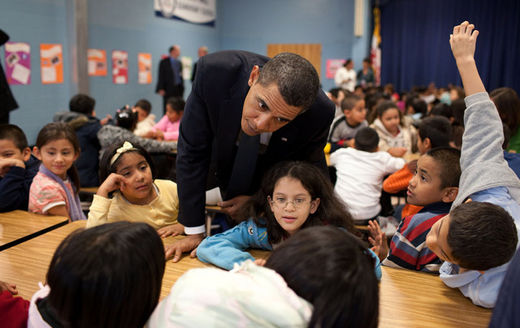
NCLB links funding to measures over which teachers have little control
No Child Left Behind was designed to bring poorer schools up to par with better-performing school districts. To level the educational playing field, the NCLB act created a series of high-stakes proficiency tests. In high-stakes testing, schools are awarded funding based on student proficiency. Educators can teach content, but they can't make students learn. It's like paying a dentist based on how well his patients brush their teeth.
High stakes tests are limited measures of achievement
Students demonstrate progress in tangible and intangible ways. Testing only measures ability to choose a correct answer in artificial circumstances. Tests can be subjective, biased and confusing. Tests say nothing about how students apply knowledge. Some students struggle with traditional testing. Test grades give a one-dimensional, distorted view of student achievement.
NCLB does not weed out bad teachers, it rewards them
A test isn't the only measure of student achievement and it's not the only measure of teacher accountability. Sometimes, teachers whose students get high test scores on one test, have learned to beat the system. It says very little about their overall teaching ability, except that they can play the game.
NCLB's one-size-fits-all fits no one
NCLB does not reward schools that are already doing well, either. Because schools are all compared on the same measure, successful schools must pick up the slack from lower performing schools. Setting content standards to fit all schools reduces it to the lowest common denominator.
NCLB forced schools into contrived contests against each other for tax dollars
Competition may be a good business model, but it is a poor educational model. Schools are not like local restaurants, each vying for consumer dollars. School districts are service units, each responsible for a different population. Each has its own jurisdiction. It's like pitting fire departments against each other.
Competition and collaboration cannot exist in the same organizational model
Schools work when everyone works together, not against, each other. When education becomes a contest with, tax dollars as the prize money, it turns schools against each other. Campaigning, undermining, one-upmanship, unsportsmanlike behavior and cheating occur.
NCLB does not level the playing field as intended
Not surprisingly, NCLB showed that students in poorer school districts did not test as well. With less funding, fewer resources are available. NCLB widens the gap instead of closing it.
About NCLB changes, President Obama said, "This does not mean that states will be able to lower their standards or escape accountability. If states want more flexibility, they're going to have to set higher standards, more honest standards that prove they're serious about meeting them."



I always thought that was funny, given the treatment it received in its home state of creation, Texas... and then brought to every conditioning school across the nation.
It's a joke like everything else the govt gives us, only most don't share their psycho sense of humor.